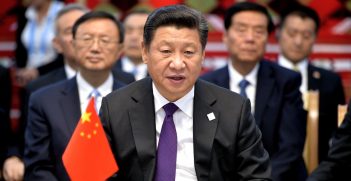It Takes Two to Tango: China and Argentina Are Becoming Closer Than Ever

China is turning to science and technology diplomacy to win over one of its most distant partners.
It is common belief that in order to modernise a country, science and technology must be prioritised for development, and is especially crucial for developing countries. Beijing prides itself on the development of its science and technology capabilities as an engine of China’s accelerated economic growth, and has risen to become one of the most active players in science and technology worldwide. China’s National Medium-Long Term Science & Technology Plan 2006-2020 utilises this distinct capability to improve relations with strategic countries that have been historically stagnant.
China’s diplomatic relations with geographically and culturally distant continents such as Latin America are widely considered to form part of the Chinese Communist Party’s (CCP) quest to assert itself as a global leader, as well as secure new markets and resources for its sustained growth. Yet, the distance between the regions has also proved a significant hurdle for ties.
Beijing’s foreign policy has been constantly evolving in order to tackle its revitalised foreign relations and present itself as a desirable partner. The CCP is convinced that the country’s economic development and the revitalisation of Chinese culture go hand in hand. Yet in countries such as Argentina, the proliferation of state-sponsored Confucius Institutes have been unsuccessful and criticised as propaganda machines.
Consequently, the PRC has identified and begun to use a new sector as a critical diplomatic instrument in its relations with Argentina. This reflects an innovative effort to bring the two countries’ relations closer together, whose economies are identified as complementary. Argentina supplies China with raw materials, and China invests in renewable resources.
China’s focus on science and technology (S&T) in the past several years has contributed to the transformation of its economy and helped make it a global leader in this field. It is utilising this leadership as a tool of diplomacy with “fellow” developing countries, particularly in Latin America. This shared identity is considered a source of mutual understanding with China, as they consider the PRC as able to recognise the needs of fellow developing countries, such as S&T.
The utilisation of S&T in diplomacy is a relatively under-researched area of international relations, yet its potential benefits are widely recognised. S&T is a unique diplomatic tool as it is neutral and a common value shared by nations that is not restricted by ideologies. Utilising S&T to improve foreign relations is not a recent phenomenon, dating back to the Cold War, it served to facilitate new relations between nations that might otherwise not exist, or two further relations between two countries.
This is significant in China’s relations with countries such as Argentina as they are exposed to another side of Chinese society that extends beyond politics or culture, particularly during a time when both states are pursuing deeper ties with the other. The universal nature of S&T means that it is not constrained by politics or culture, which has historically influenced the restricted nature of Sino-Argentine relations.
China’s relationship with Argentina has transformed significantly since the end of the 20th century, from a minute one to becoming Argentina’s second largest import partner and third largest export partner in 2017. The intensification of trade relations between China and Latin American countries means the region is increasingly viewing the PRC as an economic opportunity.
Under the Kirchner government, Argentina began to turn to China as a source of investment. China began to pursue foreign direct investments that reflect its position as a global S&T leader. This also aligns conveniently with its “National Medium-Long Term Science & Technology Plan 2006-2020,” with bilateral S&T programs championed as a mutually beneficial diplomatic endeavour. In 2018 there were over 50 Chinese companies operating in Argentina, including Huawei, ZTE, Shanghai SVA, China TCL Group, Nanjing Jincheng, the Industrial and Commercial Bank of China (ICBC) and the People’s Bank of China.
The PRC has invested in a number of energy projects in Argentina, such as the Caucharí Solar Park complex — currently the largest solar park in Latin America. China was sought out by Argentine politicians as the principal investor for the project due to the country’s recognised leadership in solar energy technology. As a result, all of the park’s solar panels are Chinese designed and manufactured, and exported to Argentina for installation.
Argentine media coverage of Caucharí reflects how the Latin American country has come to view China as an essential partner in the nation’s shift to renewable energy through this shared interest in S&T progress. One of Argentina’s most popular dailies, La Nacíon, wrote in 2016 that the PRC is setting the global agenda in S&T through its dedication to innovation, producing cutting-edge smart phones, digital payment technology and ride-sharing, all of which Argentina should imitate to subsequently achieve similar economic prosperity.
There has been a commitment to innovation in China’s economic reform that was absent in Argentina’s economic development. It is a value that is admired by the Latin American country, and there is a clear growing desire to adopt these innovative tendencies in the hope they will reap the same results.
As S&T diplomacy grows as a key collaborative tool in Chinese-Latin American relations, Argentina has been able to finally grasp a facet of Chinese society which is bringing the two states together. For the PRC, the S&T relationship is another element is another element in its comprehensive cooperation framework in Latin America that addresses the region’s participation in the BRI. For Argentina, the relationship offers invaluable access to scientific and intellectual resources needed to develop the country’s own scientific capabilities and foster economic growth.
Ludmilla Nunell is a current intern at the NSW Division of the Australian Institute of International Affairs. She has just completed a Bachelor of International and Global Studies (Honours) at the University of Sydney and is a DFAT New Colombo Plan Alumni.
This article is published under a Creative Chttps://bit.ly/2hzTa7iommons Licence and may be republished with attribution.





